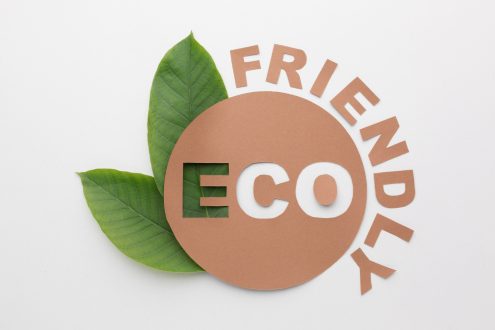- Empty cart.
- Continue Shopping
How to Set Up an Eco-Friendly Skincare Production Process
How to Set Up an Eco-Friendly Skincare Production Process 
Creating an eco-friendly production process allows your skincare brand to reduce its environmental impact while meeting consumer demand for sustainability. From sourcing ingredients to minimizing waste, here’s how you can make your production process more eco-friendly.
1. Use Sustainable and Natural Ingredients
- Why It Matters: Choosing sustainable ingredients reduces environmental impact and supports ethical practices.
- How to Do It: Start by selecting organic, fair-trade, or sustainably sourced ingredients. Work with suppliers who prioritize responsible farming practices that avoid harming ecosystems. Focus on biodegradable, plant-based ingredients that are good for both skin and the environment.
Tip: Highlight these ingredients on your packaging and website to show customers your commitment to the environment.
2. Choose Eco-Friendly Packaging
- Why It Matters: Packaging waste is a major environmental concern, so eco-friendly options help reduce it.
- How to Do It: Opt for materials like glass, aluminum, and recycled plastics, which can be recycled or reused. Avoid excessive packaging, and offer refillable containers when possible to reduce waste.
Tip: Clearly label packaging as recyclable or biodegradable, and provide instructions to help customers recycle correctly.
3. Reduce Water Usage in Production
- Why It Matters: Water conservation is important, especially as water scarcity becomes a global issue.
- How to Do It: Implement water-saving practices in your production processes. Try low-water or waterless formulas, like solid cleansers, to reduce the need for water.
Tip: Consider setting up a water recycling system in your facility to reuse water in certain stages of production.
4. Use Renewable Energy Sources
- Why It Matters: Renewable energy helps reduce carbon emissions, making your process greener.
- How to Do It: If possible, power your manufacturing with solar, wind, or hydroelectric energy. For smaller operations, consider working with facilities that already use renewable sources.
Tip: Mention your use of renewable energy on your website to show customers you’re committed to eco-friendly practices.
5. Reduce Waste in Production
- Why It Matters: Minimizing waste lowers your environmental footprint and aligns with sustainable values.
- How to Do It: Reuse leftover ingredients in other products or processes, and recycle any packaging and materials used in production.
Tip: Track your waste output and set reduction goals to keep improving your waste management over time.
6. Ensure a Sustainable Supply Chain
- Why It Matters: A truly eco-friendly brand requires a responsible supply chain to back it up.
- How to Do It: Choose suppliers that meet eco-friendly standards, like those with USDA Organic or Fair Trade certifications. Local suppliers can also reduce emissions by cutting down on transportation distances.
Tip: Build strong partnerships with suppliers who prioritize environmental and ethical standards.
7. Set Up Refill and Recycling Programs
- Why It Matters: Refill and recycling programs help reduce packaging waste, encouraging responsible consumption.
- How to Do It: Offer a program where customers can send back empty containers for refills or recycling. Incentivize this with small discounts or reward points to increase participation.
Tip: Make the program simple and accessible, encouraging more customers to return and reuse containers.
8. Manage Production to Avoid Surplus
- Why It Matters: Producing only what’s needed helps minimize waste and keeps your operations efficient.
- How to Do It: Use demand forecasting to produce what’s expected, and consider making products to order if possible. This reduces both waste and excess inventory.
Tip: Limited-batch production can also help, especially for smaller brands, as it ensures product freshness while reducing waste.
9. Get Green Certifications for Credibility
- Why It Matters: Certifications boost customer trust and validate your eco-friendly claims.
- How to Do It: Consider certifications like USDA Organic, ECOCERT, or Leaping Bunny, which emphasize sustainability and ethical standards. Display these certifications on your packaging to showcase transparency.
Tip: Include certification logos on your website and marketing materials to build credibility with eco-conscious customers.
10. Educate Customers on Eco-Friendly Practices
- Why It Matters: Educating customers empowers them to make eco-friendly choices, reinforcing your brand’s mission.
- How to Do It: Share tips on sustainable skincare habits, such as reducing water use, recycling containers, or choosing products with minimal packaging. Use your website, social media, and product packaging to spread these insights.
Tip: Provide easy guides for product disposal or reuse to encourage customers to make eco-friendly choices.
Benefits of an Eco-Friendly Skincare Production Process
- Customer Loyalty: Consumers are more likely to support brands with sustainable practices.
- Environmental Protection: Eco-friendly practices reduce waste and resource use, helping the planet.
- Competitive Advantage: A focus on sustainability makes your brand stand out.
- Cost Savings: Efficient resource use, like energy and water conservation, can reduce production costs.
Conclusion: Build a Sustainable Skincare Brand
Setting up an eco-friendly skincare production process not only helps reduce your environmental impact but also aligns your brand with consumer values. By focusing on sustainable ingredients, reducing waste, and educating customers, you can create a brand that benefits both the skin and the planet. Building a foundation of eco-friendly practices establishes your skincare brand as a trusted choice for environmentally conscious consumers.
Interested in creating your own product line? Explore our private labeling options and bring your brand vision to life. Fill out our Form to get started.
Discover more about our services by visiting our website.

